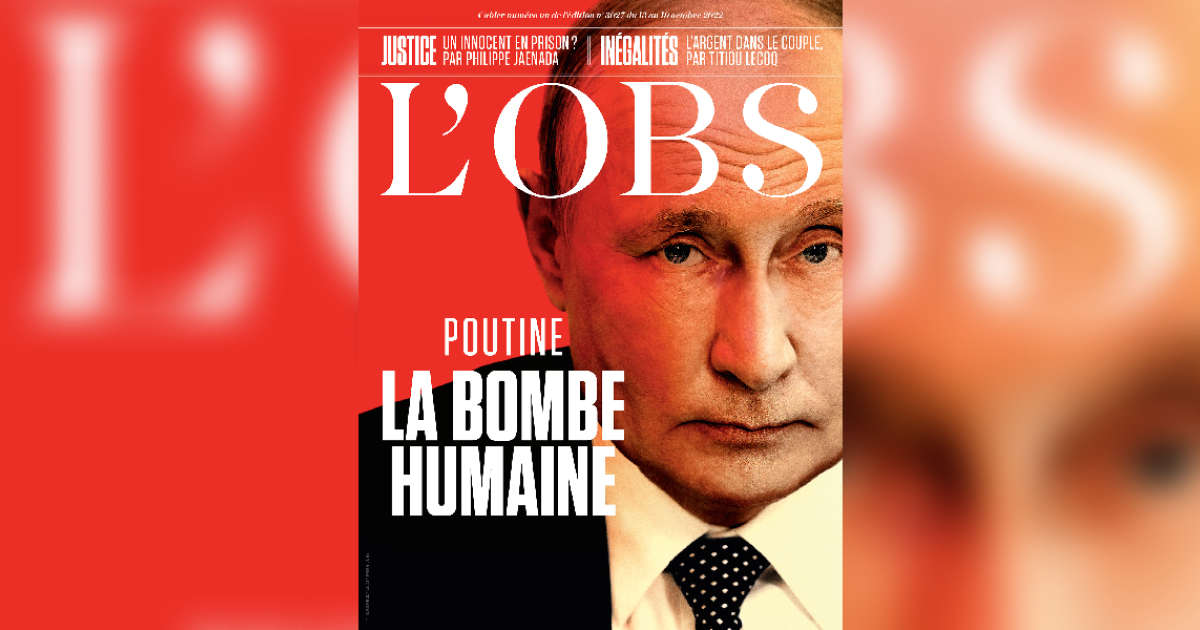Putin and the Fool's Diagonal
One could not have hoped for – or feared – greater humiliation for the master of the , and reprisals were not long in coming. The rain of missiles that fell on kyiv and other Ukrainian cities on Monday, October 10, is indeed Putin's direct response to the snub that had been inflicted on him 48 hours earlier, and which could not go unpunished in the eyes of of the Kremlin. Saturday October 8 at 3 a.m., when the Russian president had just celebrated his 70e anniversary, an explosion devastated the Kerch bridge which connects Russia and Crimea, the pride of the Russian president and the most complete symbol of his domination over the Ukrainian territory annexed in 2014.
To attack this bridge was to attack the heart of Putin's imperialism and to underline its fragility – or even worse, to want to announce its end. It was also to make fun once again of the setbacks of the Russian president – and the Ukrainians did not hesitate to do so. A provocation which offered a pretext for a new headlong rush by Putin, in a worrying escalation which increasingly threatens the stability of Europe.
This is indeed the paradox of the mad war being waged by Russia: as Putin's power weakens, the risk of war escalating in Ukraine increases and, behind it, the nuclear threat, regularly agitated by the Russian president. . Cornered in Ukraine where he has been steadily losing ground for several weeks, faced with the discontent of his population forced into the mobilization of 300,000 men, challenged even in his inner circle, the Russian president has hardly any more options. He must flex his muscles, threaten the Ukrainians and their allies ever more, as he has done on several occasions since the beginning of the war, in a clear allusion to atomic weapons. So much so that Joe Biden has publicly acknowledged that there is “a direct threat of the use of nuclear weapons if things continue to go the way they are going now”dropping the dreaded word of possible « apocalypse ».
The atom, which we had hoped would be put on the shelf of the junk of history thanks to the successive denuclearization treaties, is therefore making a strong comeback in our collective representations and reactivating our ancestral fears of the end of the world. What seemed excluded in the rational world of nuclear deterrence (the atomic weapon exists only so that we do not use it under any circumstances), becomes plausible in the irrational world of a dictator. The risk, which has never seemed so high since the Cuban Missile Crisis in 1962, is now taken seriously by international experts. One of them, the American Joseph Cirincione, details for the “Obs” the four possible scenarios of a nuclear strike by Putin. Where we understand that, in all cases, the transgression that would represent the use of a weapon that has remained dormant since Hiroshima and Nagasaki could only lead to an ultimately fatal escalation for the Kremlin and the entire regime.
Will Vladimir Putin, who had thwarted most predictions by invading Ukraine, take the diagonal of the madman in the huge game of chess that he himself started? This is where the major violation of the annexation of one sovereign country by another has led us: almost eight months after the start of the war, everyone is speculating on the choices of a man, whose hubris demonstrated that he could defy all logic. But as in any war of nerves, this sword of Damocles should not lead the West to lower its guard, quite the contrary.
This is the time to highlight all the effects of deterrence, and to make Russia's potential allies, including China first and foremost, understand what such a crossing of the red line would represent. Aware of the dangers but in solidarity with Ukraine, we must not give up on Russian imperialism: to make Putin admit the fact that he won't be able to bluff for very long.

Comments
Post a Comment